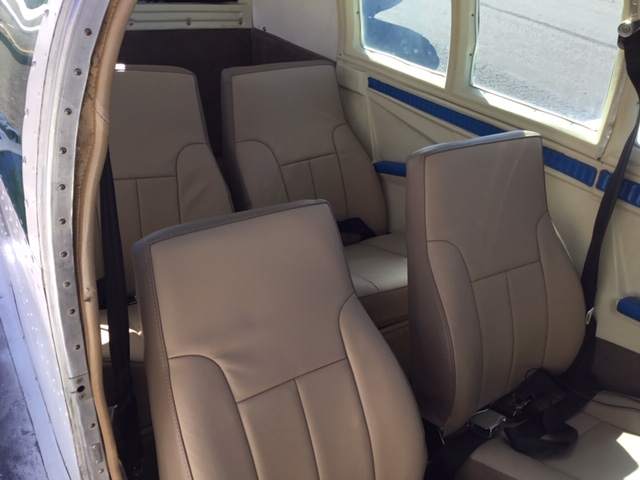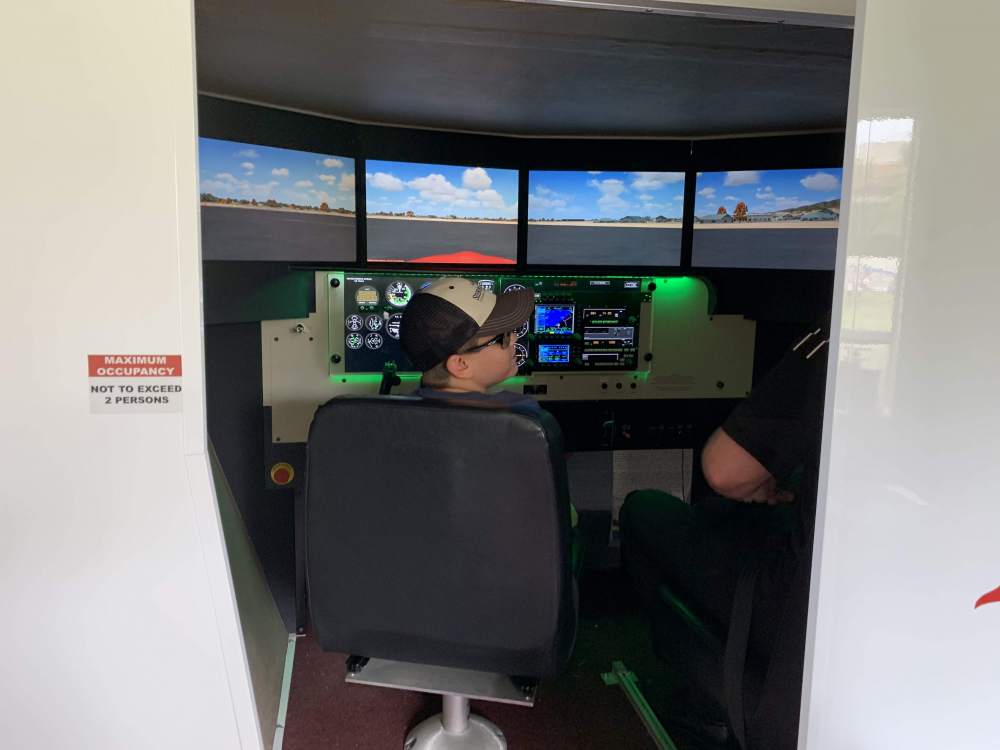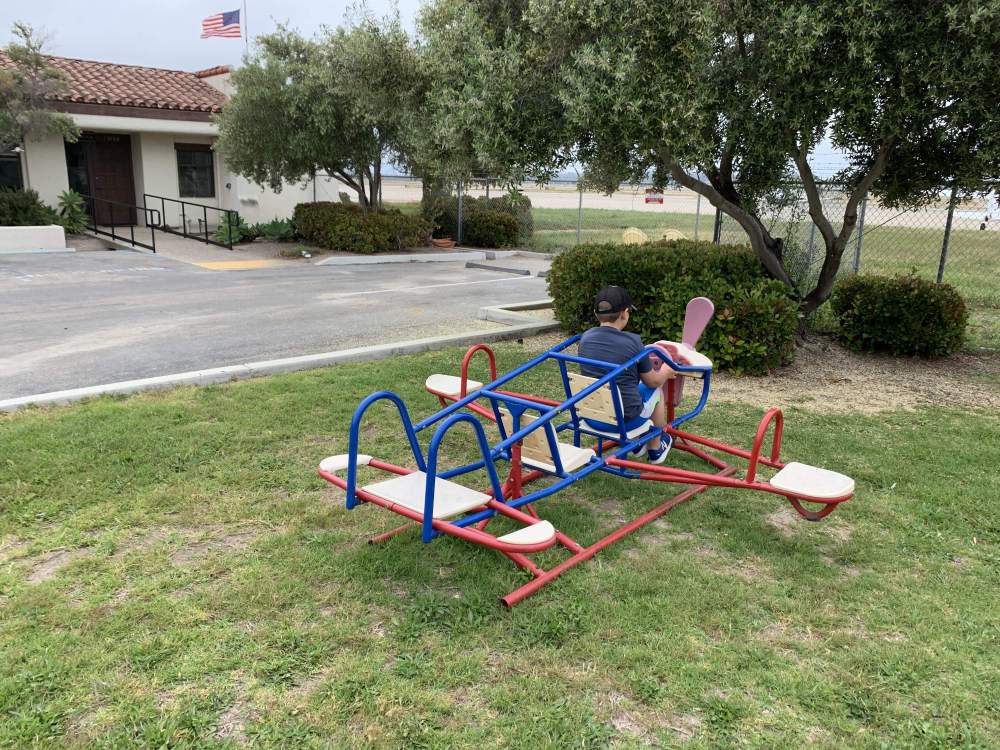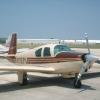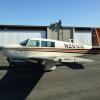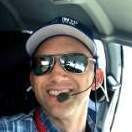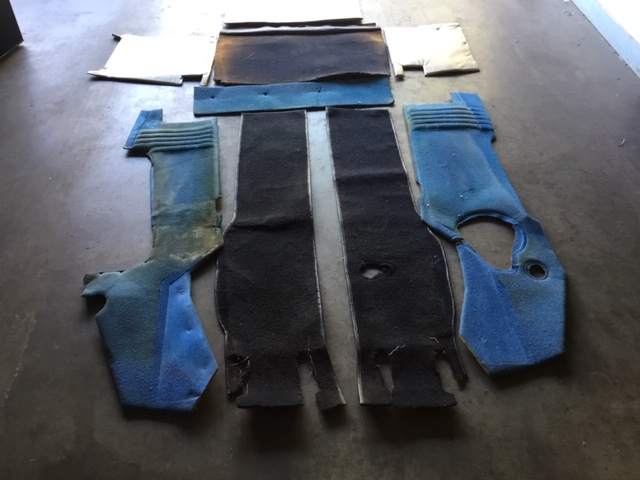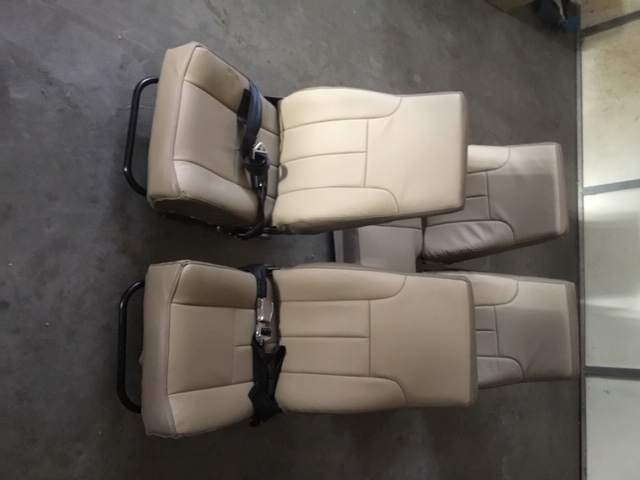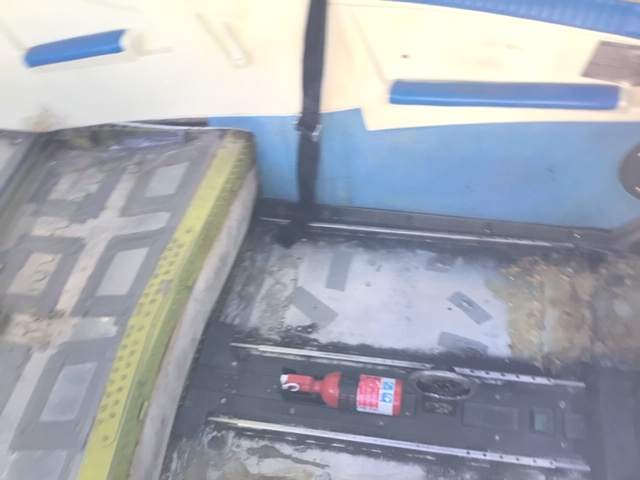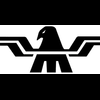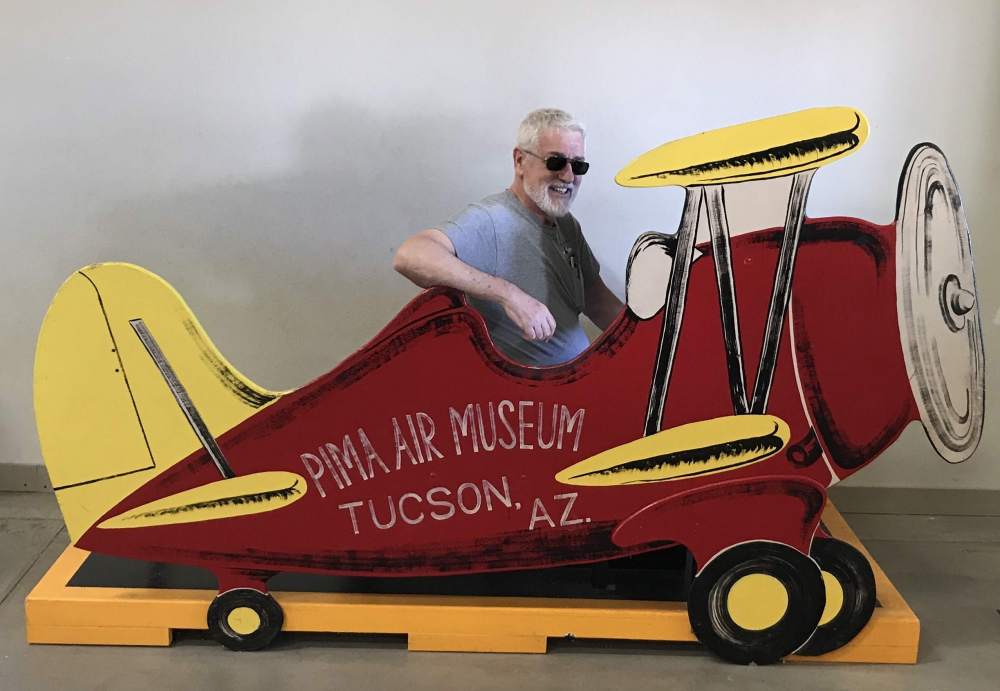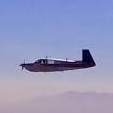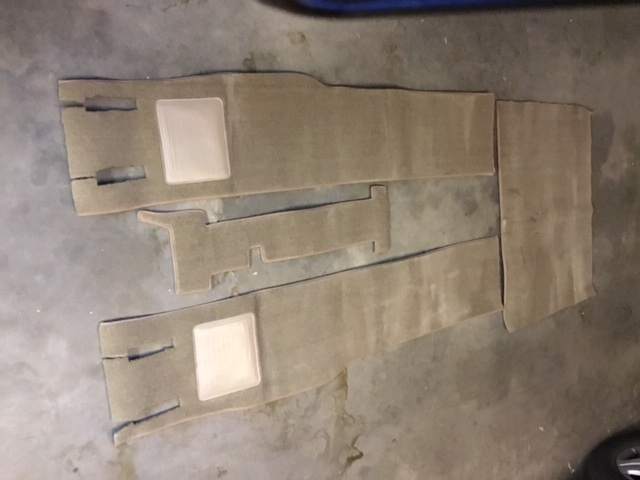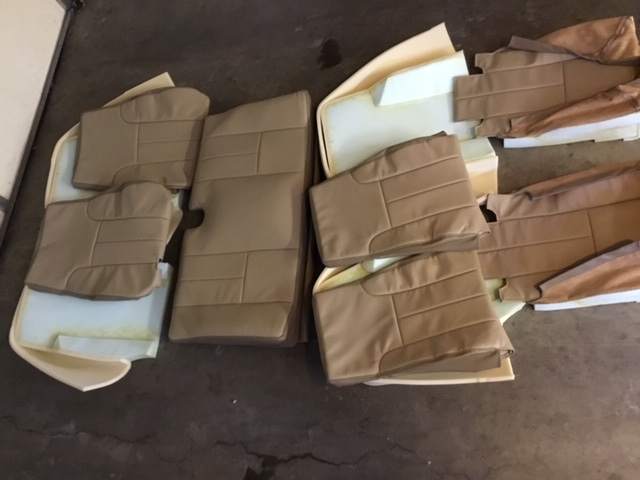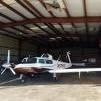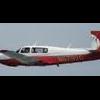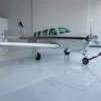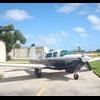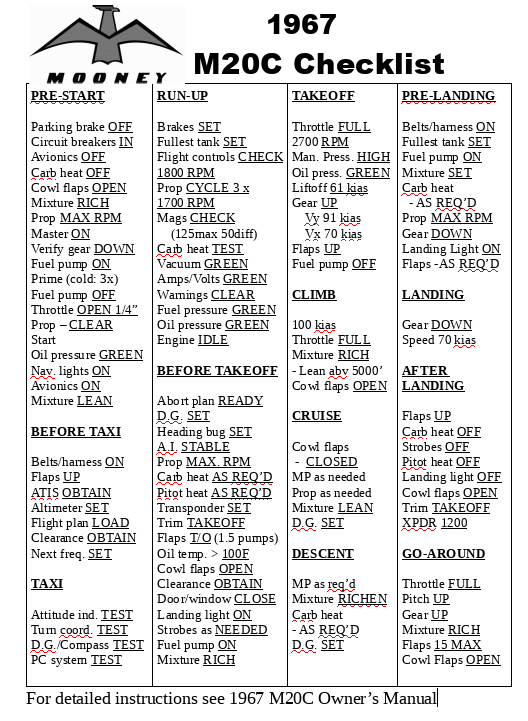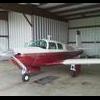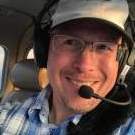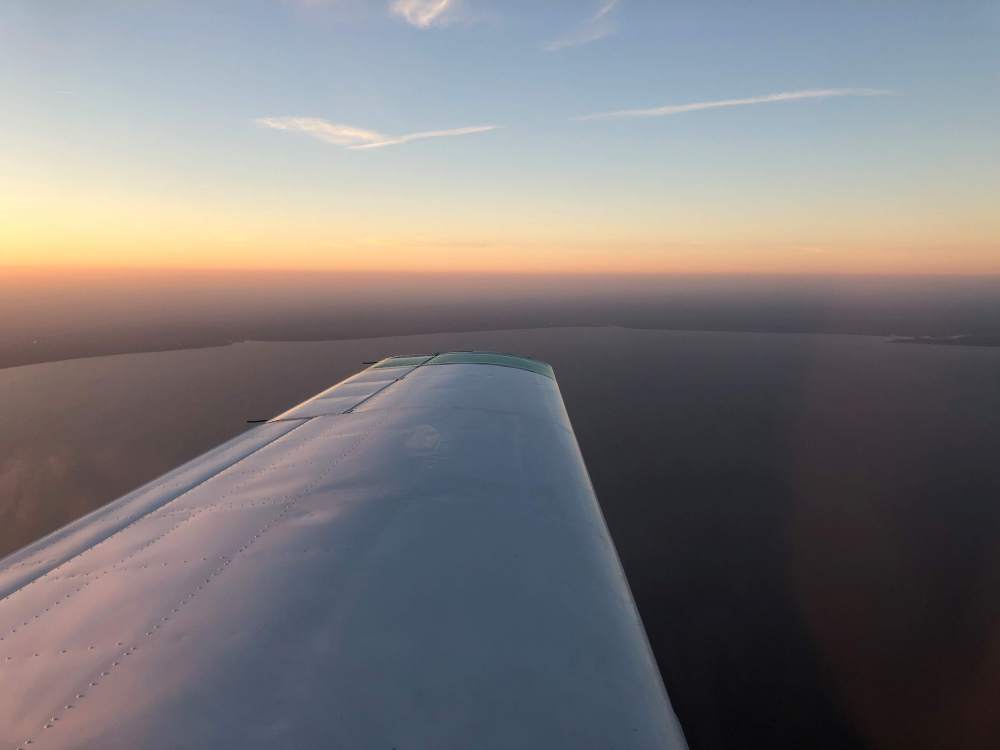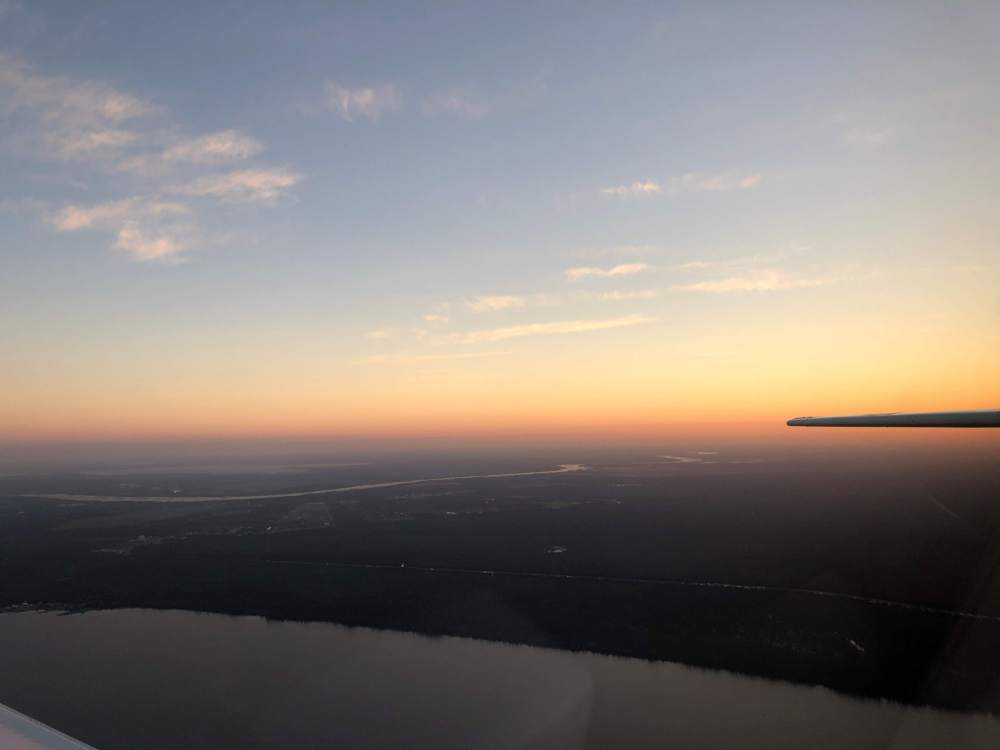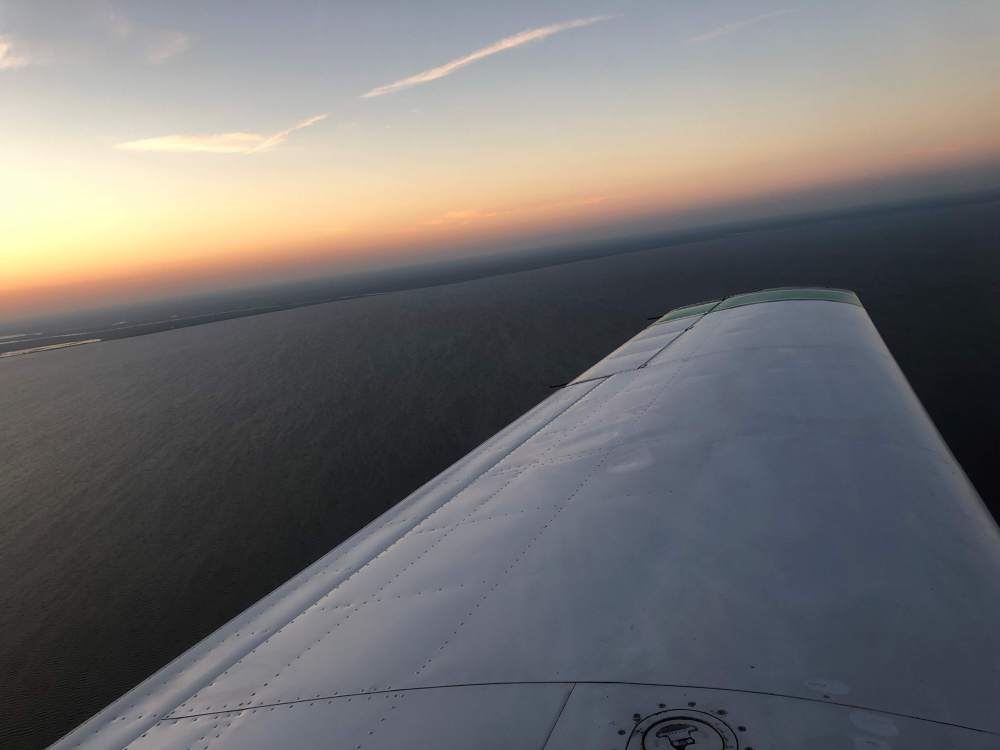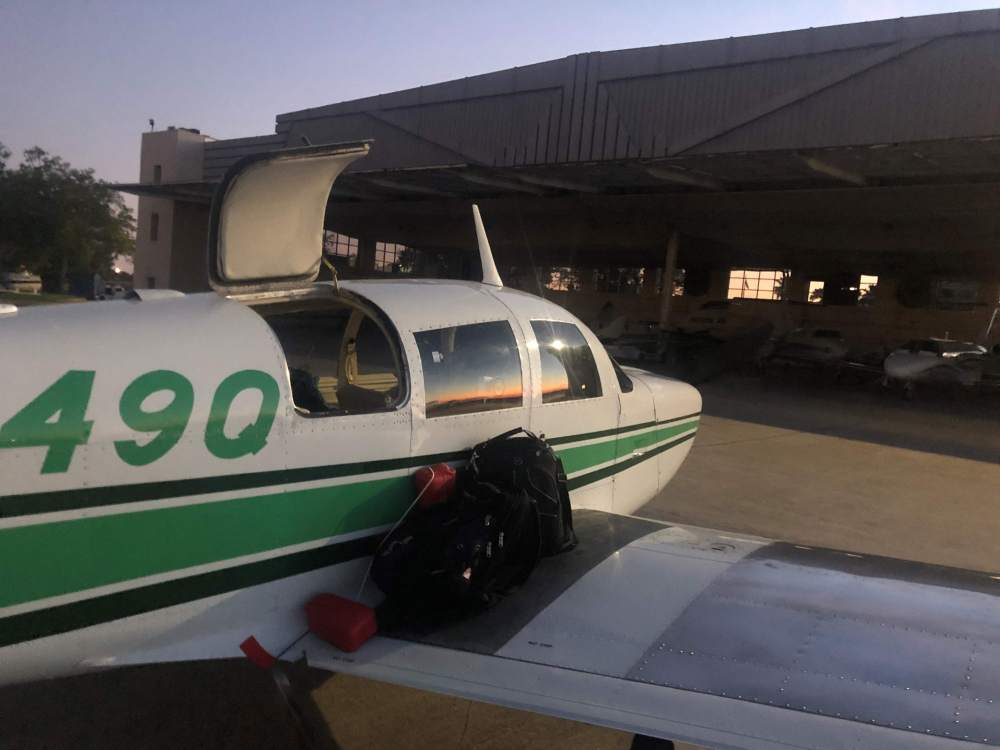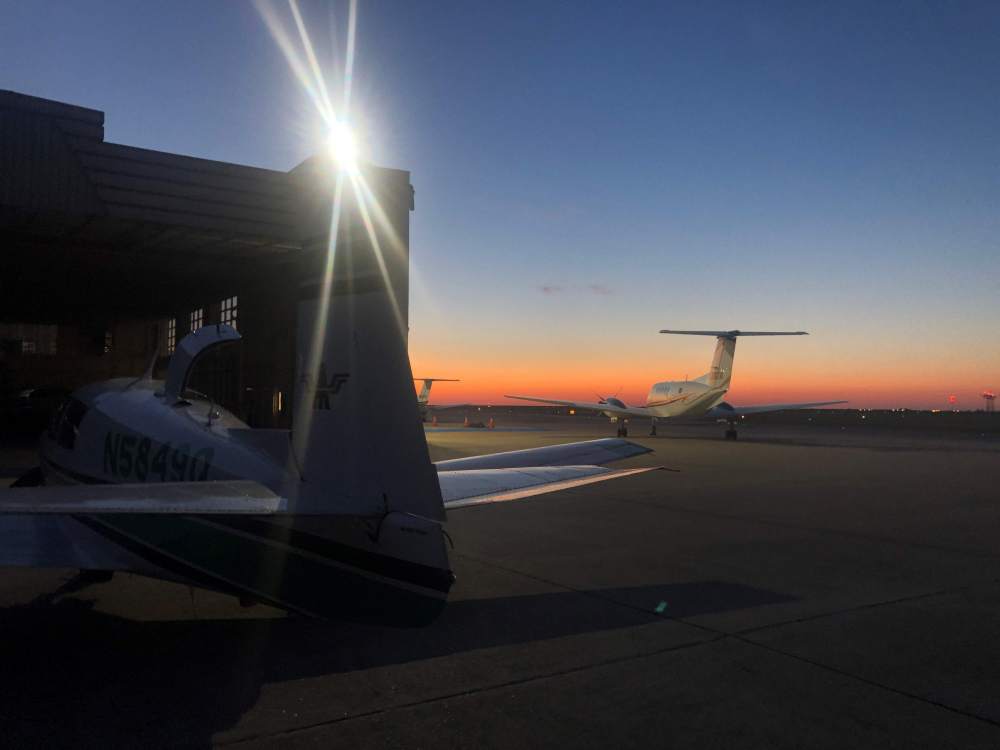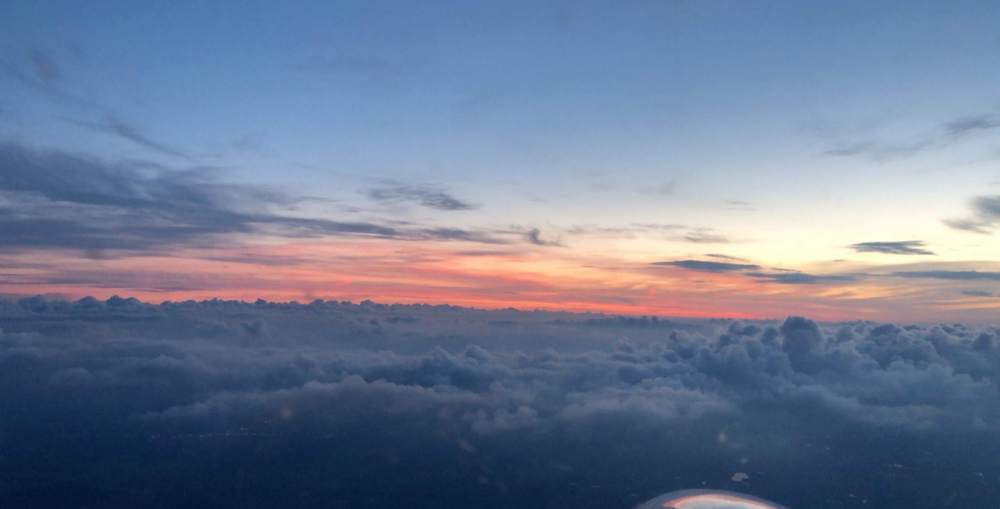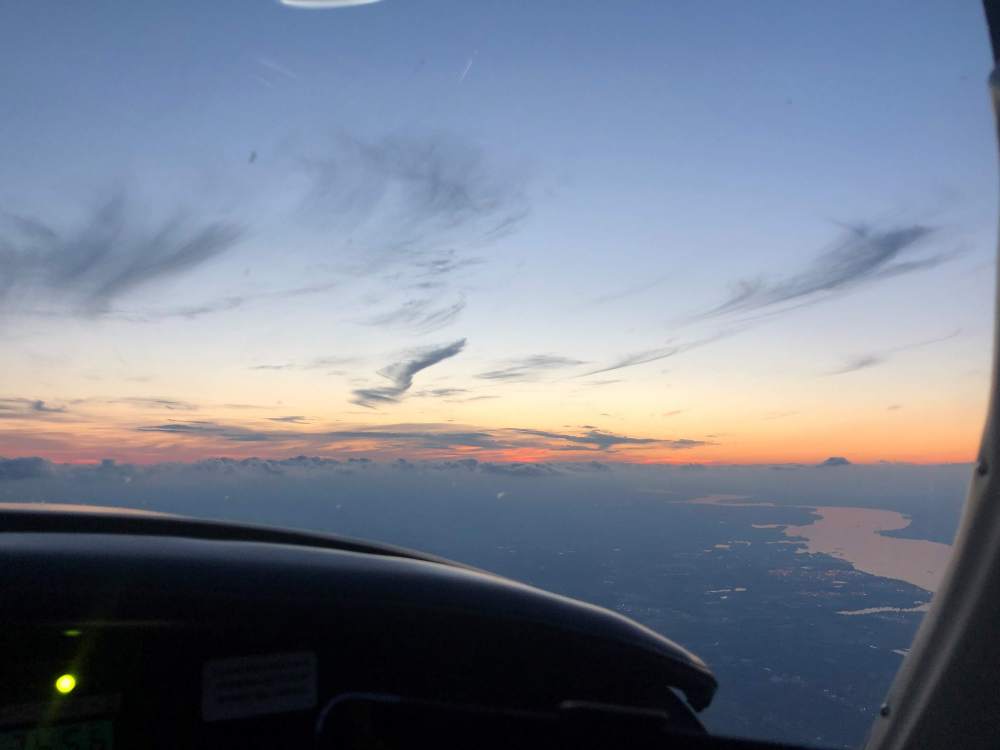Leaderboard
Popular Content
Showing content with the highest reputation on 05/04/2019 in all areas
-
6 points
-
4 points
-
Call Don Maxwell at Maxwell Aviation in Longview TX. He’s a highly regarded Mooney specialist with decades of experience. Sent from my iPhone using Tapatalk3 points
-
A supercharged(turbo or mechanical) engine/airplane gains 2% of TAS per 1000ft at a constant horsepower. A normally aspirated engine loses about 3% of horsepower per 1000ft. You cannot go faster by making less horsepower. It sounds good on paper but simply isn't possible. Mooney tried really hard to get the J to 201mph. It would only happen at sea level and it certainly wasn't a typical production aircraft.3 points
-
We have a very...very... accurate GPS receiver with anti-spoofing encryption. But it’s not “WAAS” certified. the ILS antenna in the F-35 is in the nose wheel well- I have to open my gear doors to get an ILS signal. The sensors in the F-35 are far more accurate at detecting and updating traffic than the ADSB receivers in my mooney. And if it means that I’ll be detected easier in combat due to adding an ADSB antenna, then I’d rather skipper ADSB, and just use my radar. trust me- we are not wandering around blind out there... the whole of the sensor information is projected onto the visor in my helmet- when I designate an air contact, I literally see a box around it, and if I’m not looking at it, I get an arrow that points directly to the target. It’s pretty amazing... and honestly- I hope that some sort of “google Glass” comes along that can tie into ADSb to give me some fraction of that capability in GA. But I hope Garmin doesn’t build it... because they’d charge 50K for it!3 points
-
If anyone talks to Cory tell him I can't count the number of 14 hour duty days (16 hrs hotel to hotel) I had with the 121s when I was working. Long days and flying go together. Its part of the life you accept. Everything has trade offs.2 points
-
So, living in Eclectic AL, do you realize there are two military training route just a couple miles north of town? Both IR21 and VR1055. Also if you think a C-130 at 300AGL and 220KTS is just lumbering through the air and you will easily see it, you are sadly mistaken. I fly these routes in a Beech 400 at 500 AGL and 240 KTGS, trust me we are not easy to see. Of course even if you had ADSB it would not will change this. Of course if you have ADSB-out and/or your transponder on, I would be able see you on my iPad and TCAS and maneuver to avoid you.2 points
-
My wife was a “fearful flyer” when we first got the Mooney although she was fully supportive of the purchase (and helped pick the plane). I suggested that she take flying lessons because although there are certain issue to be worried about when flying, they weren’t really the ones she was worried about. She went to the flight school and told them she wanted lessons in a 172 so they gave her the paperwork and told her that she should get renter’s insurance before her solo. Apparently, this turned into an awkward exchange when she replied “Are you kidding? There’s no way I’m flying a plane by myself!” She got too busy with work after the first few lessons, but she’s really helpful now with setting up the avionics and will talk to ATC and even fly a little during cruise. I wouldn’t be flying if I didn’t have a supportive spouse!2 points
-
I flew fighters and trainers for 14 years. We ALWAYS flew IFR unless there was an operation need to fly VFR. For example, flying a VFR low level route where we were below radar coverage. Or during the controller strike when we were finally allowed to depart VFR if we could not get an IFR release within 15 minutes of reaching the runway. Other than that we took off IFR, flew IFR to our MOA, did our work in the MOA and came home IFR. Air to mud fighters do a lot more low level flying than air to air pilots. As an air to air guy I probably only got to fly low level less than 6 times/year. You would be surprised how easy it would be to miss a C130 on a collision course unless you got lucky enough to look directly at him. Your focal field of view is pretty darn small. The rest of your eyesight only sees in blurry light and relies on motion or change in light intensity to detect traffic. And getting ADS-B is not as expensive as you claim. There are several boxes under $2000 now some of which only require a few hours to install. And you can get a portable ADS-B in box for a few hundred. I give up though. You've convinced yourself that ADS-B is worthless. That's your choice. No amount of talking is going to convince you otherwise.2 points
-
My dad flew HC-130's all over Alaska, around the mountains, through mountain passes, etc... for four years back in the early 80's searching for downed/missing planes, stranded/missing climbers, and boats in distress. He is amazed at all the information available on my tablet.2 points
-
I have friends who flew helicopters / C130s in tall, rocky regions north of the Middle East a decade or so ago, with their personal Garmin 296 & 396 units velcroed to their panels for improved situational awareness and easier navigation.2 points
-
Now for the fun part! Removal of the old foam and installation of the new. The front seat back is removed by a couple of screws (picture is useful to remember the sequence of washers and spacers. The seat back in my vintage of Mooney had a solid plastic piece held by a bunch of screws. Once this is off, there are a bunch of plastic rivets. Some of these will be needed on the reinstallation, but not all (so you don’t need to be too careful removing them. Once the rivets are off the seat back and bottom, the foam can be ripped off. This leaves a fair amount of foam that still needs to be removed. I experimented with a range of methods to remove the excess foam and glue (including heat gun, mechanical and chemical). The best method I found was chemical, with the best chemical being MEK (I also tried IPA, acetone, and xylenes). I’m a chemist, so I’m comfortable with all of these, but be sure to have proper gloves, safety glasses and ventilation. The process can be repeated for the back seats backs. Once the foam is off of the seat bottoms, take a look at the surface. I had 3 cracks in the aluminum (2 on one, 1 on the other) at the front corner of the seat. I decided to stop-drill these, although, on a 44 year old airplane, I don’t know if it would have gotten worse. The back seat bottom is a stand-alone piece so there is no need to salvage the old one. Once the foam and glue has been removed, it’s time to put the new seats on. For the seat backs, the foam will need to be trimmed. I tried a few different ways of doing it and felt that trimming it to cover the tops and sides was best. If you want the foam to extend to th back, it will work as well. I felt it was best to glue the foam on. I used a 3M 1357 neoprene contact adhesive (available from Aircraft Spruce, among others). Since I took a few sessions to do all 6 seats (4 seat backs and 2 seat bottoms), I just used a disposable brush. Good ventilation, gloves and eye protection required (again). Slather the adhesive on the metal seat and the foam (the foam will suck up the adhesive, use liberally). Take th foam piece and carefully align it to the seat. Once, it’s aligned, place the foam. The working time for this adhesive is pretty short, so you may not be able to reposition it afterwards. Once the glue on the foam has cured, you can put on the covers. For the seat bottoms, it’s a matter of folding the leather over and using those plastic rivets to put it into place. I used an awl to position the leather, but a small screwdriver would work as well. The seat backs are a little trickier. I tried to fold the cover inside-out and fold it over the seat. This didn’t work as well as placing it over the foam and “massaging” it down the seat. This took some time (10-20 min), but it worked well. At the bottom, the seat cover is velcroed into place. Reinstallation of the pieces. The pilot side panel has a pocket. I thought this would be nice, but it has to go behind the gear extension panel, so is less useful than I thought. Installation of the panels is tricky; this is where the awl is most useful...as are the pictures for the specific screws and pattern that you’ll need to reinstall everything. Front seats are relatively easy to install, just a reverse of the original process. I chose to put in new cotter pins (the old ones looked pretty beat up). The back seat bottom is pretty easy to put in. The hardest is the back seat backs. I found it easiest to sit in the cargo area while installing them.2 points
-
Taking out the seats is relatively easy. Take the cotter pins out for the front seats and forward/back to get them off the rails. As an aside, if you don’t already have 3-pt seat belts, this is a good time to install them. For the back seat, I have a ‘74 M20F. The seats are designed to be removed. A pin in the lower-inboard side is pulled out and the seat can be removed. The best discussion of the process is here: http://flying-geek.blogspot.com/2018/07/seat-back-removal-1969-mooney-m20f.html The seat back bottom is held in place by a couple of short metal rods; simply pull the rod out of the bracket holding it and the seat will come out. Once the seats are removed, the removal of the side panels and carpets is straightforward. This is a good opportunity to vacuum, clean out old foam, etc. most disgusting part of the process...when I took out the right side panel, I noticed a bunch of insulation. When I took it out, there was a mummified mouse head. After that, I did a close inspection behind all the panels; luckily no other sign of mice (and the one I saw was small and old. Of course, here are some pictures of the process.2 points
-
Stuff like that happens more often than not. Airliners tend to hate flying over MOAs because their TCAS systems can be set off by fighters maneuvering 15,000’ below them as they are fighting in the vertical if they leave their mode 3/C on... even though the fighter jet is in a vertical turn, the tcas doesn’t see that, just the trend upwards in climb rate, and predicts collisions/gives alerts.1 point
-
It’s surprising how little of a disturbance in the skin of an aircraft can create a huge radar return. I do agree that ADS-B out on our fighters might be a safety enhancement for GA- but it could also be a safety detractor (at least in MOA’s)- as the fighters tend to navigate at 300-350kts, and can have huge rates of ascent and descent (in excess of 30,000fpm). Which may cause other ADS-B receivers to alter their courses erroneously based on stale data. there are certainly cases where ADSB our for a fighter would be very helpful to vfr traffic, though- the tragic midair between the vfr cessna and the F-16 on an ifr approach in South Carolina comes to mind. I would personally LOVE to have ADS-B In in the F-35, for the weather. But again- I’d rather not have that if it mean increasing my radar crosssection.1 point
-
1 point
-
He actually liked the second one more, although he did land on the aircraft carrier in the bay between SAN and NAS North Island. He rolled off the end of the deck, though.1 point
-
1 point
-
I like the second one, you could have a couple kids sit on the end of the wings and randomly bounce up and down to simulate turbulence.1 point
-
Well that is good to know you have superb avionics. I still assert there is value to having an ADSB out transponder for use in domestic airspace, so that we can see you, I understand that you can see us with your superb on board equipment but I do think there is great value on some occasions for you to be able to transpond your location to other domestic aircraft within the given civil infrastructure which today is the ADSB system. And of course sometimes you would not want to and you could shut it off. I hadn't considered, but I understand that even having an antenna hanging out could make you too easily findable by enemy airplanes when you don't want to be seen, but just like your ILS antenna is hidden in your wheel well, a tiny antenna could be hidden somewhere and deployed or stowed as you wish - so yes I see this will cost more than a few AMU - but it seems like it would be a desirable feature. Oh well.1 point
-
I'd be concerned about wing flutter, control surface separation, and windscreen facial insertion.1 point
-
At Luke AFB- we fly IFR to the airspace, if we are going to sells or gladbag. If we are going to one of the low level routes, we take off on a VFR departure . On RTB- the preferred recovery due to the traffic in the Phoenix area is a VFR recovery either from”Tankz” (glad bag) or the Arc.. or the “valley recovery” which is a VFR recovery from the BMGR (sells/AAHl). the regs (11-202) clearly state to fly IFR to the max extent practical. In the Phoenix area, however, we have contracts in place to reduce the load on ATC- and as such, unless it’s IMC, almost all our recoveries are VFR, and several of our departures are as well. when I was flying F-15’s in the guard in Oregon- all our recoveries were VFR (unless imc), all our departures were VFR, when I was in the Navy, my departures and recoveries were far more flexible- I could request a new clearance on the ground, like any other pilot (in the Air Force, your clearance for a local flight is set for you through stereo routes). And if I wanted, I could cancel at the hold short and launch VFR if I felt it would expedite my mission. Even at night. (Which in the Air Force is against the regs- VFR at night).1 point
-
1 point
-
My wife is the same, except what intimidates her is the stack of books that came in my Gleim "You Can Be a Pilot" box . . . . She's the least-reading-est teacher I've ever known.1 point
-
1 point
-
Just had an online conversation with Corey Reed yesterday.. . For guy that was (supposedly?) fired, he sure still has a great relationship with TruTrack. He is still offering help and suggestions on the TT autopilot and is actively promoting their product. He is pursuing his dream of flying commercially. Building lots of hours flying a Cessna for a surveying/mapping company. Says the hours are building, but having some very long days when the weather is good.... Nav1 point
-
I am with Jesse on this one... TruTrak just reached 20 people… Still a small player here... What they have done so far is nothing short of remarkable... N1 point
-
Overall, the process is pretty simple, but it does take time. I did mine when my airplane was in for avionics work (which took much longer than expected...a tale for another time). The prices on the Airtex website are accurate. I decided to install leather seats, which added $1k to the price. I also decided to do carpets and the sidewalls at the same time. The carpets and sidewalls were completed pretty quickly (1-2 weeks). The seats themselves took 7-8 weeks (possibly due to them being leather). I chose tan because I’ll be getting the plane painted, and I didn’t want to limit my color choices. The seats are actually two different shades, but I probably should have chosen shades that weren’t so close to one another. The front seat bottoms have foam glued to them already. For the seat backs, the foam is separate and the back is basically a slip cover. The back seat bottom is a complete unit and can be installed as it. Here are pics of what is in the box(es).1 point
-
1 point
-
I can't really see where the wires go other than that big bundle of wires you mentioned. I know there's a circuit breaker on my breaker panel for the unit though.1 point
-
Here’s the kit I purchased to use with WashWax All. https://washwax.com/collections/the-wash-wax-mop Sent from my iPhone using Tapatalk1 point
-
1 point
-
1 point
-
I’m enjoying ADS-B in feature with my Stratux RxWx/Avare/Samsung Tablet A units. Another useful tool in the airplane!1 point
-
I found a older factory reman (1992). It is high time (over 1900) with good compression and it is a BA3B engine with the 7th stud and a VAR crankshaft. It was still on the plane so I got to fly it and do a compression test and the owner had continuous oil samples as well. It was being removed for a IO-550 Conversion. I plan to have it overhauled before I use it but I would still be interested in a low to mid time IO-520.1 point
-
Just keep in mind that the most difficult traffic to spot is traffic on a collision course. If they aren't going to hit you they will be moving in the windscreen which is usually how you spot traffic. While the big sky theory usually works, it isn't perfect. Knowing there is traffic out there on a collision course can at least get us looking in the right direction or maybe even make us decide to alter course just a little. The Garmin green relative vector is especially nice for determining whether traffic will get very close or not. Try thinking of ADS-B IN as insurance. I didn't expect to die unexpectedly for ANY reason prior to retirement, but I had life insurance anyway. Same with homeowner's, collision, and medical insurance. It only takes once to ruin our plans. Do you have any of those types of insurance? I also like ADS-B IN for checking enroute and destination weather when I'm on a long flight. Obviously your choice though... as long as you don't want to enter ADS-B airspace after 1/1/20.1 point
-
Ah yes, the great risk assessor we have here. More worried about a cloud than a chunk of aluminum less than a mile closing at 400 knots. We all bow down to your superior intellect.1 point
-
That's right. The cage that rocket built to hold the engine was a very special custom design to shoe horn that tsio520nb beast into a cowl space originally designed for a tsio360, E1 point
-
Sure, Anthony. The plane flies faster in lower density air (less drag) and density is a function of both altitude and temperature. You are always better off higher if the engine will put out the power you need. The two common ways of achieving this are super/turbocharging and having a more powerful engine derrated at sea level which is how the turboprops operate. The poor J with its little 200 hp engine doesn't get very high before it starts to run out of power, but it makes up for it by being so efficient. That's why I like to cruise at 8000 -9000 feet ROP. I like to go fast and I figure I already pre-saved on gas by not buying a Cirrus Skip1 point
-
My question would be "does she have sister?"...... Just kid'n, my wife loves flying and has never questioned anything spent on aviation, in fact she's just the opposite1 point
-
Alex, The system is pretty simple... so if fluid enters a TKS panel, and comes out in some areas, and it doesn’t come through all of the areas... that is an indication that something may be blocking the flow... or something is allowing the flow to go elsewhere... 1) if it is blocked locally, at the individual panel... That something has made its way through the pumps and filters... so, it is probably a situation of dried TKS fluid? Is there a recommended fluid used for cleaning up dried TKS fluid? 2) Most likely... not enough fluid is being delivered to the panel... it just runs out the first holes it comes to... this would be a challenge created by the flow valves... balancing the overall system seems to make some sense... especially if balancing the system means stopping a leak that is allowing flow away from where it belongs... It is such a simple system, See if you can find your system drawing for where all the parts are located... expect something simple to be the actual problem... Find a way to do a baby food jar test... like checking the flow balance of fuel coming out of a fuel injector... only using TKS and plastic bags? PP thoughts only, lots of manual reading, no first hand experience on this one... Best regards, -a-1 point
-
Like I always say.. that traffic has always been there, we just never knew.1 point
-
1 point
-
1 point
-
https://docs.google.com/spreadsheets/d/1UCLgkUfwXRaLDRmIjI9tR2vcQL86b1bdlGzct3TApRY/edit#gid=0 This is what I use - created from my POH and personal flows.1 point
-
1 point
-
Flew down to Houston for a wedding Friday. Flew from SGR to NEW Saturday to say hello to a friend. Over Galleria in Houston / Transco Tower Crossing over Lake Pontchartrain It was so cool landing over the water Nice Sunset Reflection Sunday was a bit more chaotic. Got lunch with my sister who was in NOLA for a wedding. Had to non rev her back to DC so she wouldnt be considered AWOL from her Military leave. Well all flights to DCA were packed. Flew NEW-CSG (was going to drop her off in RDU and suffer through to night back to GPM.) Landed in CSG and looked at flights from HSV to DCA. It was open again, we turned North West to HSV from CSG. Got her on the ground with 40 minutes to go. She got her ticket, and walked on board! This was leaving HSV to TXK Texarkana for a fuel stop before continuing to GPM. 51kt cross wind from the south before turning to final at GPM. LONG flight back from HSV to GPM. Total for the weekend: 12.6 Hours Total on Sunday alone: 8.6 Hours1 point
-
We finally got to the age where we could afford a Airpark house in Houston. But we had to sell the airplane to affford the house. I’ve never seen a 200 mph house, except in Kansas and it was a single use. so we passed on the deal1 point
-
I’ve been working on the flying portion of my IR for the past few months. Really need to buckle down and get the written out of the way in the next couple of weeks. For my flying lately I use lower power cruise (125-130 kts) for my enroute portion. As soon as I reach the IAF I reduce power to 2350/18. When I’m about two miles from the FAF I reduce to 2350/15. I make slight power changes to hold altitude and aim for 110mph to drop the gear when I’m about a half a dot high on the glide slope. I reduce the MP to 12 and pitch for 95mph and put in 1.5 pumps of flaps. At 200 feet above DA/MDA I put the prop full forward during my gump check and start the fuel pump. When missed full mixture and smoothly go to full power positive rate of climb while pitching for 100 mph. I open the cowl flaps and after 5-10 seconds I slowly pitch for 90-95 and bob the nose to bring up the gear and then quickly the flaps. Climb out at 120 mph. Important things for me to remember? Get the power out before you know ATC is going to drop you down. Don’t try to use the gear or flaps to slow you down. If something does not feel right do a gump check (landing or climb out stage). Get the radios dialed in before you need them. Above all have a good time!1 point





